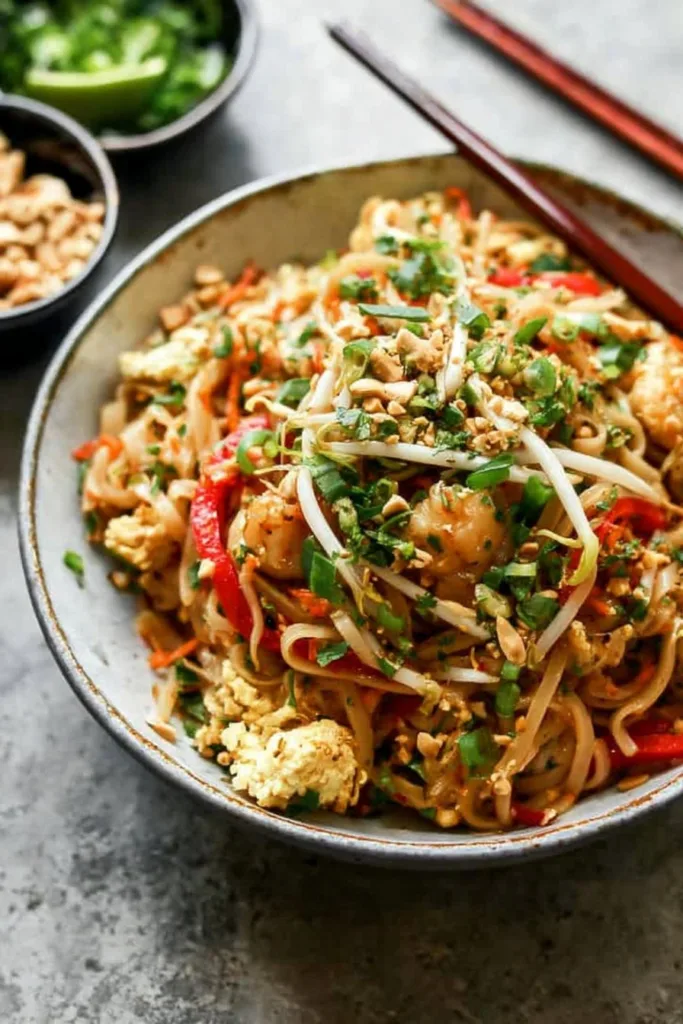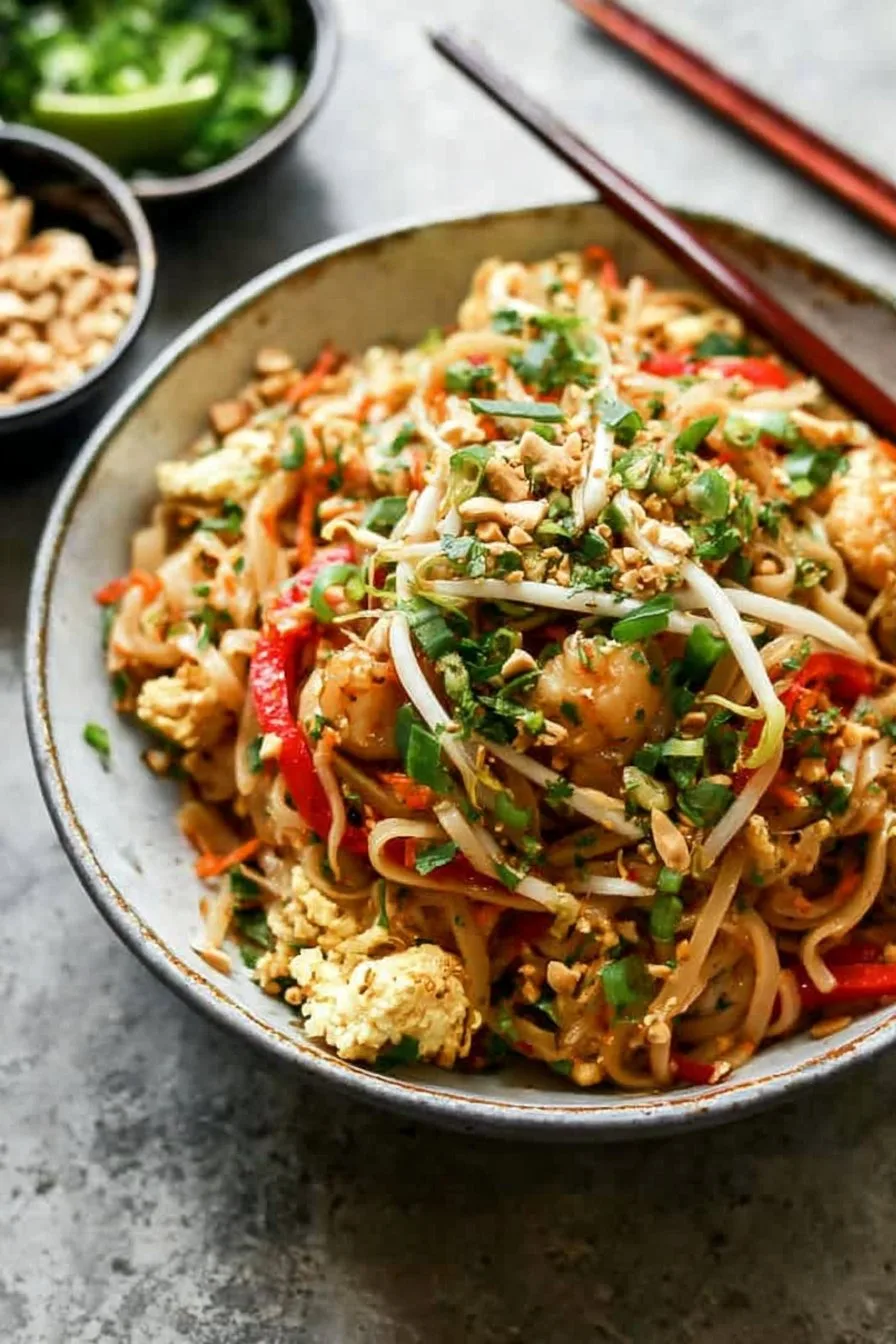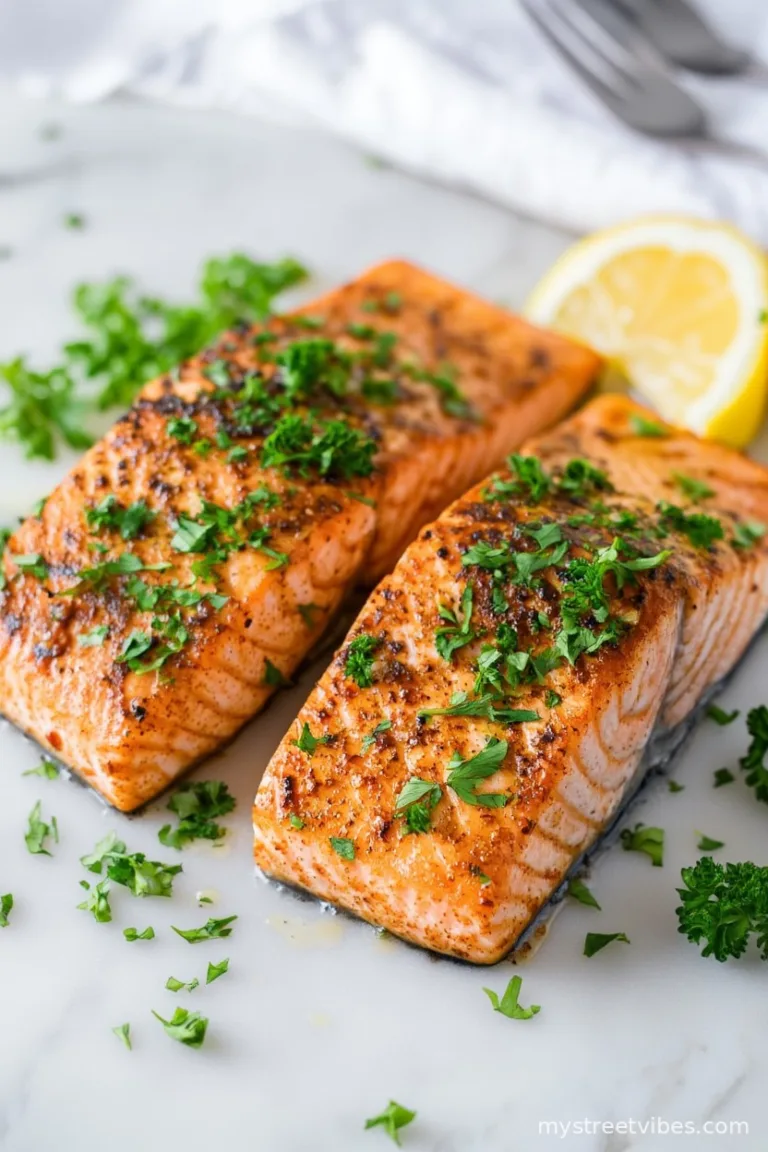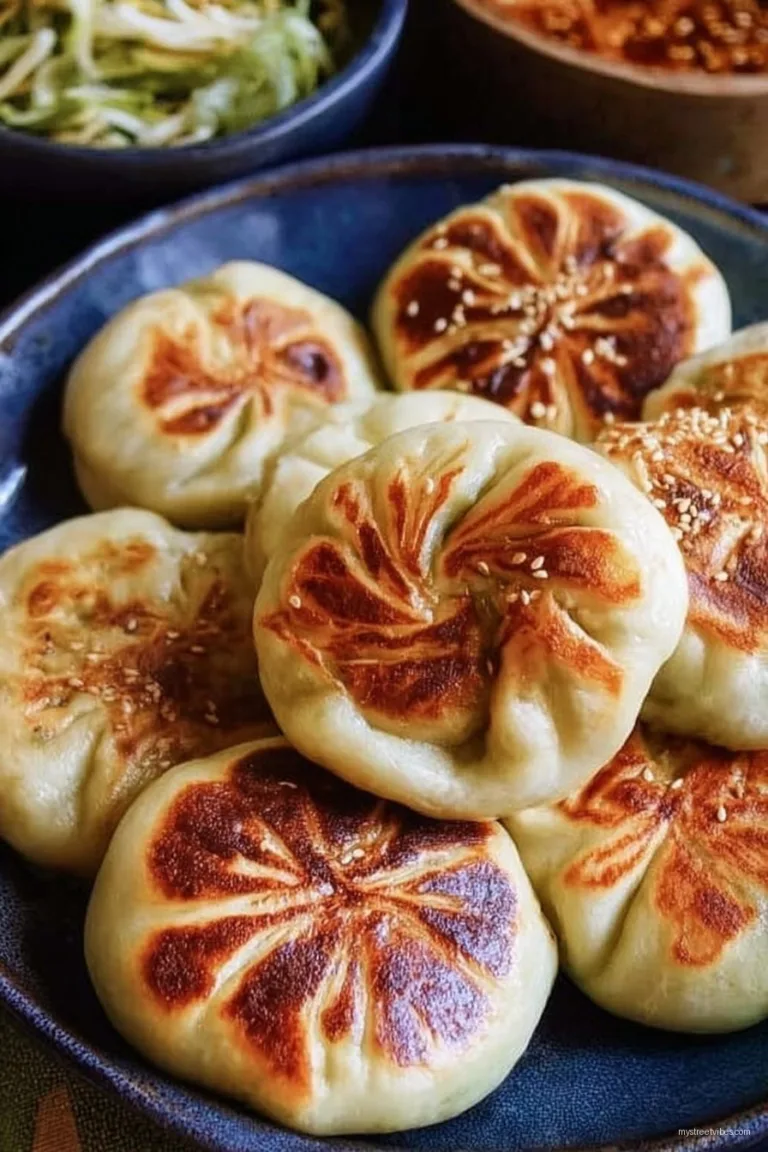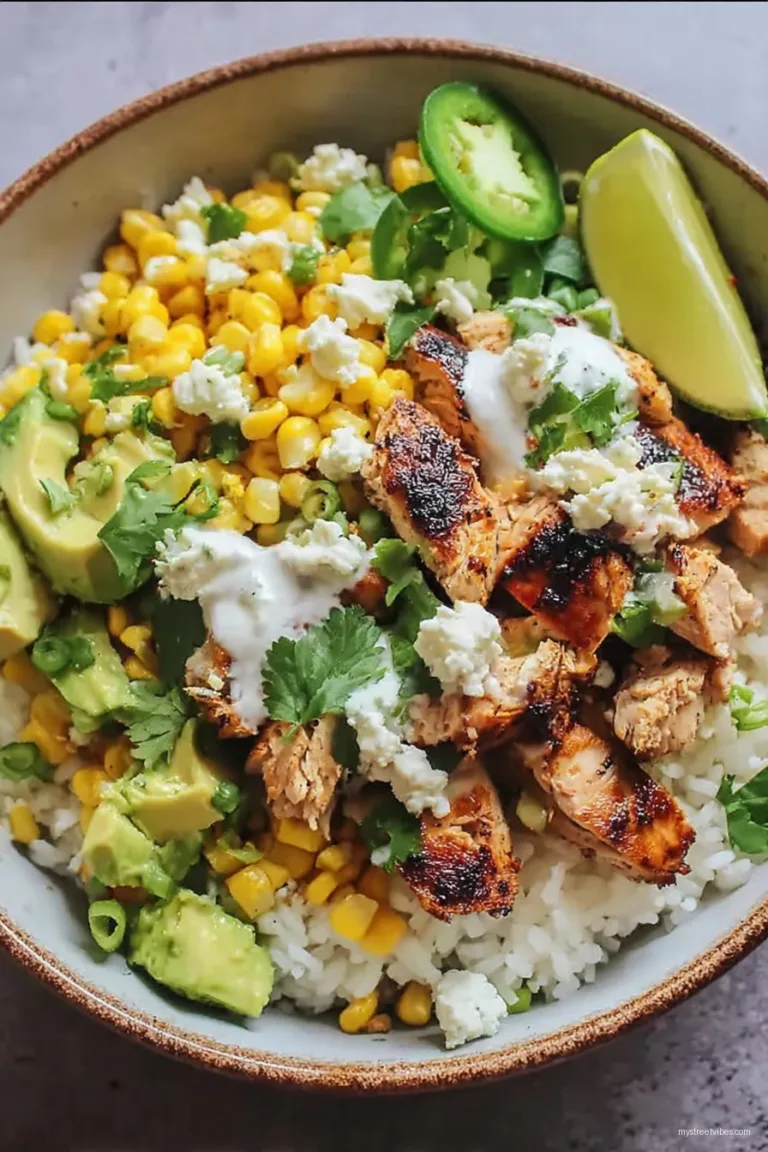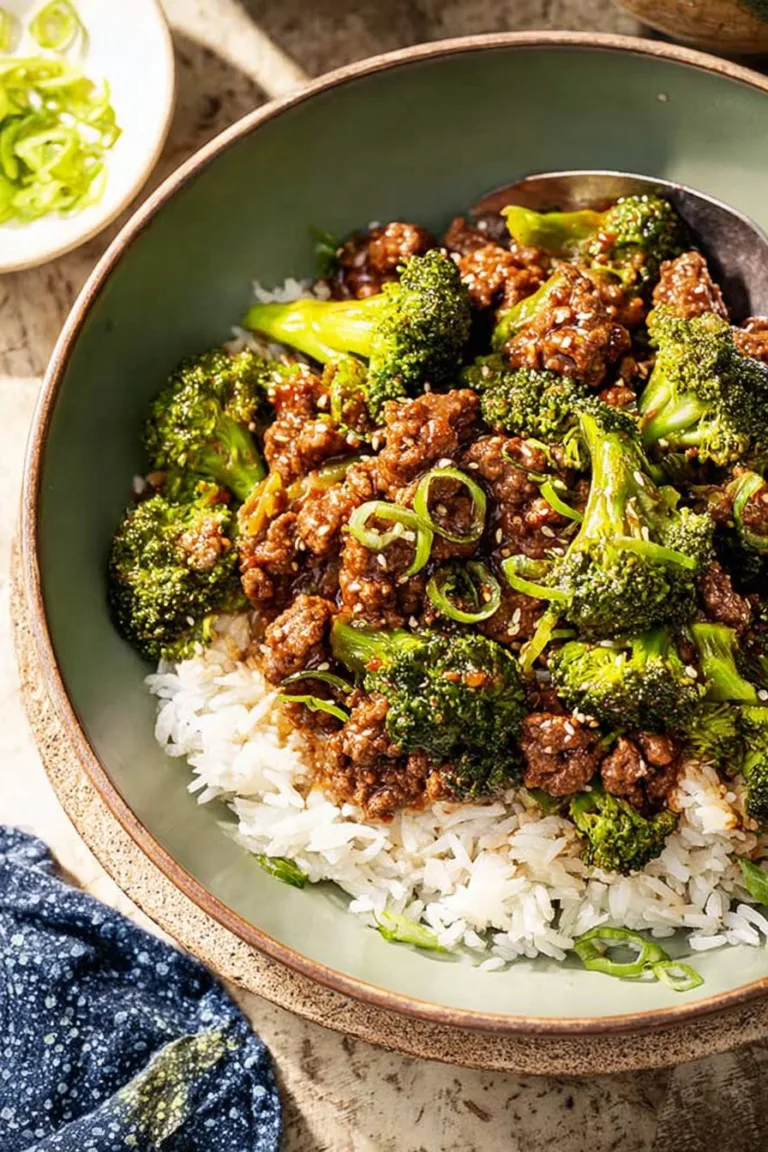Hey y’all! If you’re craving a mouthwatering dish that’s sweet, sour, savory, and just a little bit spicy, this Pad Thai recipe is the answer. It’s loaded with tender rice noodles, crunchy peanuts, fresh veggies, and that irresistible tamarind sauce. Whether you’re whipping up a weeknight dinner or hosting a fun get-together, Pad Thai is always a crowd-pleaser. Let’s get cooking!
Why You’ll Love This Pad Thai
- Quick and easy: Ready in just 30 minutes for fast, flavorful meals.
- Customizable: Easily adjust the protein, spice level, or veggies to your liking.
- Authentic flavor: Classic tangy, sweet, and umami-packed Pad Thai sauce.
- Perfect for leftovers: Tastes just as good the next day.
- Great for gatherings: Impressive yet simple enough for any home cook.
Pad Thai Ingredients
- 8 oz (225g) dried flat rice noodles
- 2 tbsp vegetable oil
- 2 cloves garlic, minced
- 1 shallot, finely chopped
- 2 eggs, lightly beaten
- 8 oz (225g) chicken breast or shrimp, sliced (optional for protein)
- 1 cup bean sprouts
- 1/2 cup firm tofu, cubed
- 1/4 cup roasted peanuts, chopped
- 2 green onions, sliced
- 1 lime, cut into wedges
- 1/4 cup cilantro, chopped
- For Pad Thai Sauce:
- 3 tbsp fish sauce
- 1 1/2 tbsp tamarind paste (what is tamarind paste?)
- 2 tbsp palm sugar or brown sugar
- 1/2 tsp chili flakes (adjust to taste)
How to Make Pad Thai: Step-by-Step Directions
Step 1: Prep the Rice Noodles
Soak the rice noodles in warm water for 25-30 minutes or until just tender. Drain and set aside.
Step 2: Make the Pad Thai Sauce
In a small bowl, whisk together fish sauce, tamarind paste, palm sugar, and chili flakes until the sugar dissolves. Set aside.
Step 3: Cook the Protein
Heat 1 tablespoon of oil in a large nonstick skillet or wok over medium-high heat. Add chicken or shrimp and cook for 3-4 minutes until just cooked through. Remove and set aside.
Step 4: Sauté Aromatics and Tofu
Add the remaining tablespoon of oil to the skillet. Sauté garlic and shallot for 1 minute until fragrant. Add tofu cubes and cook, stirring, until golden, about 2 minutes.
Step 5: Scramble the Eggs
Push the aromatics and tofu to one side of the pan. Pour in the beaten eggs and scramble until just set.
Step 6: Combine Everything
Add the drained noodles, cooked protein, and Pad Thai sauce. Toss everything together for 2-3 minutes until the noodles are evenly coated and heated through.
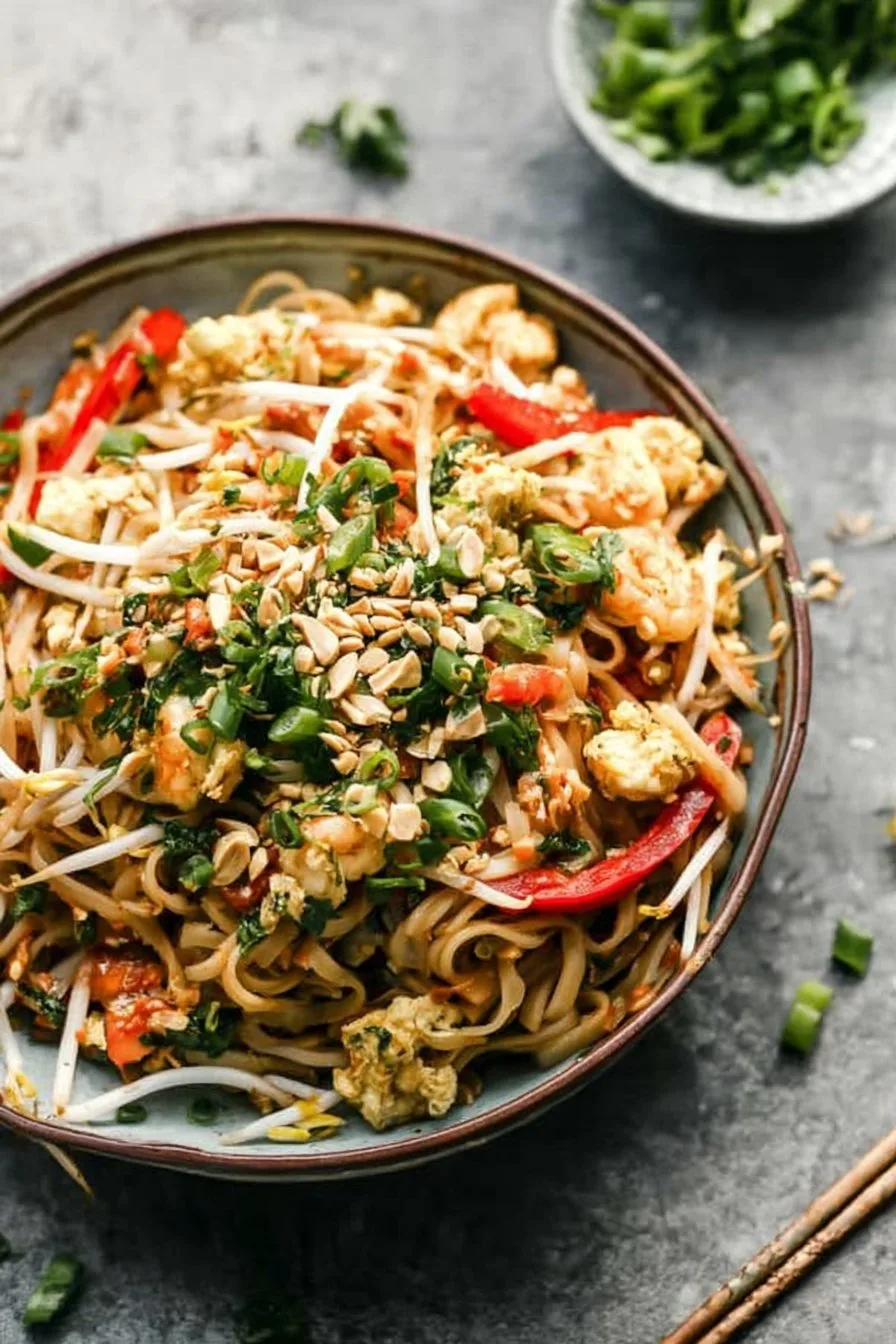
Step 7: Add the Finishing Touches
Turn off the heat and fold in bean sprouts and half of the green onions. Serve immediately, garnished with peanuts, cilantro, remaining green onions, and lime wedges.
Pad Thai Notes & Tips
- Don’t over-soak rice noodles—al dente texture is key for authentic Pad Thai. Learn more about cooking rice noodles here.
- Use tamarind concentrate for a tangier flavor if you can’t find tamarind paste.
- If you prefer a vegetarian Pad Thai, swap fish sauce for soy sauce and skip the shrimp or chicken.
Pad Thai Variations
- Vegetarian Pad Thai: Use extra tofu and substitute soy sauce for fish sauce.
- Prawn Pad Thai: Use only shrimp as your protein and increase chili flakes for more heat.
- Gluten-Free Pad Thai: Ensure all sauces are gluten-free (check labels!) and use certified gluten-free noodles.
Equipment Needed for Pad Thai
- Large nonstick skillet or wok
- Mixing bowls
- Colander or strainer
- Wooden spoon or spatula
- Sharp knife
Pad Thai Storage & Shelf Life
Store leftover Pad Thai in an airtight container in the refrigerator for up to 3 days. Reheat gently in a skillet or microwave, adding a splash of water if needed to loosen the noodles. Freezing is not recommended, as the noodles may become mushy.
Serving Suggestions & Pairings for Pad Thai
- Serve with extra lime wedges and a sprinkle of chili flakes.
- Pair with a crunchy Thai cucumber salad or a bowl of hot and sour soup.
- Enjoy with Thai iced tea for the ultimate authentic meal!
Pro Tips for the Best Pad Thai
- Prep all ingredients before cooking—Pad Thai comes together quickly! See more tips for prepping Pad Thai here.
- Use high heat for stir-frying to achieve that signature smoky wok flavor, known as “wok hei.”
- Adjust sauce sweetness and tang to your personal taste before adding to noodles.
Pad Thai FAQ
- Can I use pre-cooked noodles? Yes, but rinse them under hot water and reduce soaking time to avoid mushy noodles.
- Is Pad Thai very spicy? Traditionally, it’s mildly spicy, but you can add more chili flakes if you like extra heat.
- What can I use instead of tamarind paste? Try 2 tbsp lime juice mixed with 1 tbsp brown sugar for a quick substitute, though the flavor will differ slightly.
Ingredients
- 8 oz flat rice noodles
- 2 tablespoons vegetable oil
- 8 oz shrimp, peeled and deveined
- 4 oz firm tofu, cubed
- 2 large eggs
- 1 cup bean sprouts
- 3 green onions, sliced
- 1/4 cup roasted peanuts, chopped
- 2 tablespoons fish sauce
- 2 tablespoons tamarind paste
- 1 tablespoon brown sugar
- 1 lime, cut into wedges
Instructions
-
1Soak the rice noodles in warm water for 20 minutes or until softened. Drain and set aside.
-
2In a small bowl, mix together fish sauce, tamarind paste, and brown sugar to make the sauce.
-
3Heat vegetable oil in a large skillet or wok over medium-high heat. Add tofu and shrimp, and stir-fry until shrimp turn pink and tofu is golden.
-
4Push the shrimp and tofu to one side of the pan. Crack the eggs into the pan and scramble until just set.
-
5Add the drained noodles and sauce to the pan. Toss everything together and stir-fry for 2-3 minutes until well combined.
-
6Remove from heat and stir in bean sprouts and green onions. Serve hot, garnished with chopped peanuts and lime wedges.
Approximate Information for One Serving
Nutrition Disclaimers
Number of total servings shown is approximate. Actual number of servings will depend on your preferred portion sizes.
Nutritional values shown are general guidelines and reflect information for 1 serving using the ingredients listed, not including any optional ingredients. Actual macros may vary slightly depending on specific brands and types of ingredients used.
To determine the weight of one serving, prepare the recipe as instructed. Weigh the finished recipe, then divide the weight of the finished recipe (not including the weight of the container the food is in) by the desired number of servings. Result will be the weight of one serving.
Did you make this recipe?
Please consider Pinning it!!
